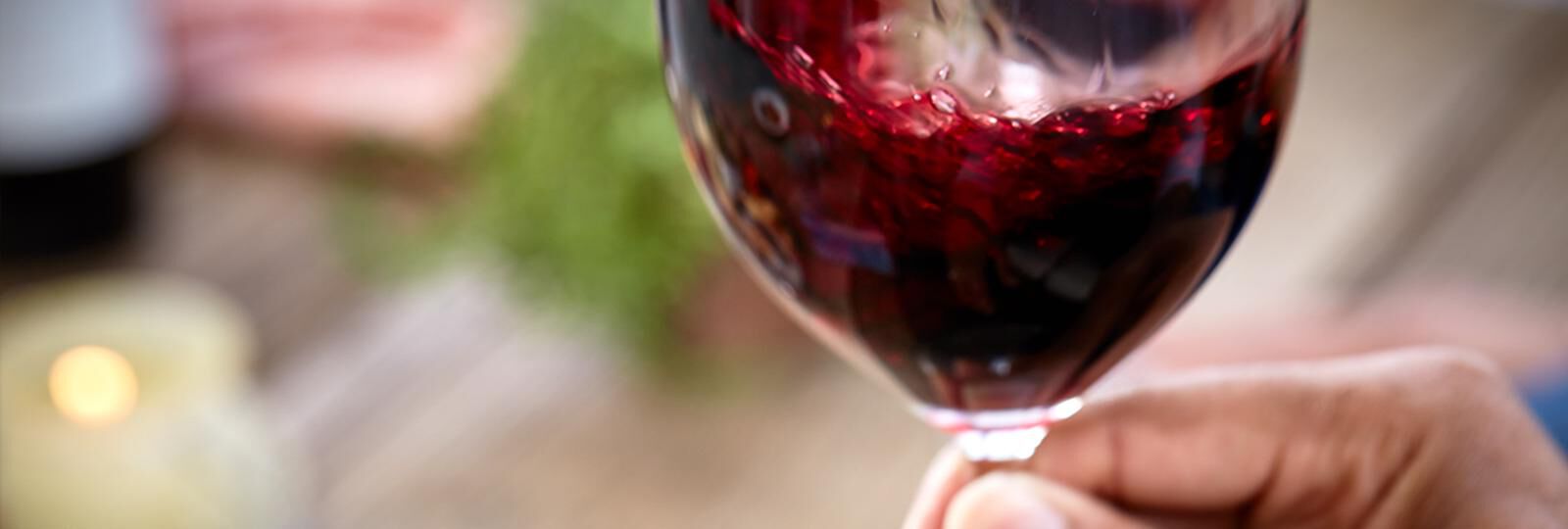WINE TASTING 101
Categories
Category: [name of category]
The question of how to taste wine is often asked by those who are new to wine tasting. This is a great question and the formula for evaluating wine is essential to what we do here at the winery. With the upcoming Fall release, we have six great new vintages to explore, but have decided to take a more in-depth look at the process with one of our favorites - an extremely limited, Tasting Room-exclusive: the 2015 Knights Valley Malbec.
Typically, when we are having the casual glass of wine after hours, we simply sip and enjoy, but when new wine arrives we take more time to evaluate. When enjoying a new wine for the first time, there are three main elements to analyze: color, aroma and taste. Each of these has specific details to consider.
Color is often something that is overlooked. Seldom do we see guests take the time to hold the glass in the air to look through the sides, or tilt it on its edge to see the center of the glass. Looking at the color works best against a white background, that way we can tell this vintage of Malbec is dark, very dark. The center of the glass is almost black, however the color tapers at the edge of the wine, which shows a rich purple color. When Guest Relations Supervisor, Joe Label, poured this wine for the first time, he immediately noted the deep purple color and said, “Wow there is intense color extraction here.” This would lead one to believe there may be more concentration of flavors in the wine. Wine tasting is always a comparison from one wine to another; impressions with the color of the Malbec had the team thinking of the color of Petite Sirah, or a full-bodied Zinfandel.
When it comes to the aromas of wine, there are thousands of possibilities. Each grape variety has specific characteristics to explore. We use the term “varietal character” to describe the potential aromas in a particular wine. Malbec tends to have a darker fruit profile, such as blackberry or black cherry, with savory and spice notes. When evaluating aromas, it’s important to get your nose deep into the glass and tilt your head from side to side. It is a little-known fact that at any given time, you have a dominate nostril.
One of the most entertaining parts of wine drinking is “the swirl,” which comes with lots of practice. It is best to start slowly to prevent purple Jackson Pollock-like splashes on your clothes. The swirl increases the surface area of the wine, introducing oxygen, and allows you to capture more of the aroma. Dave Cassetta, our Tasting Room Lead, exclaims that the wine has more dominate spice notes than the previous vintage and hints of black licorice aroma. We all quickly agree.
Finally, there is taste, and like color and aroma, it is not without its intricacies to showcase the immense complexity wine has to offer. When tasting wine, it is important to have the wine reach all parts of your tongue. Wine professionals will bring the wine to their lips and draw it into their mouth (almost drinking from a straw), having it touch the tip of their tongue first, before allowing it to touch the middle and sides. Each part of your tongue can taste different flavors, so this is key to remember when formally evaluating the taste of a wine. There are three parts, or sequences, to tasting wine: the initial, mid-palate and finish. Your first impressions will come on the initial as the wine hits your tongue. Some wines lack a notable intensity during the initial, however the Malbec does not lack this and the spice that was noticed in the aromas caries through and instantaneously sparks your attention. The most concentrated flavors of the wine are noticed during the mid-palate and the most attention is paid to the flavor that register in the wine right before swallowing. Everything that you taste after that is the finish. Depending on the wine it can be short, only a few seconds, or up to a minute as the intensity of the wine lingers on your palate.
One other important aspect to note is the texture of the wine. For red wines, we look at how the wine feels in your mouth such as the viscosity or full-bodied nature. We also talk about tannins. Tannins are chemical compounds found in red wines that create a sensation of dryness on your palate. Tannins come from the extraction of color from the grape skins as well as from the aging process in oak barrels. The 2015 Malbec was aged in French oak for 24 months and with the deep color there is a fair amount of tannin, however they are not overpowering. The wine has a medium to full-bodied character with flavors of blackberry, dark chocolate, black licorice and spice. It is a fantastic example of the varietal and we look forward to sharing with you!
Cheers,
The Tasting Room Team
